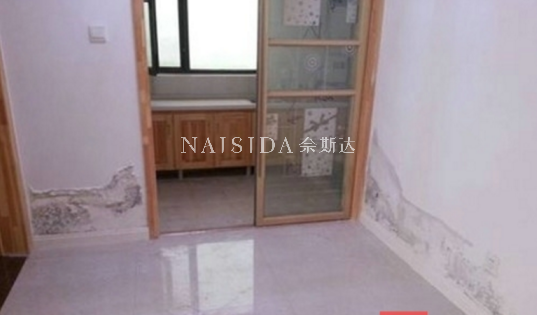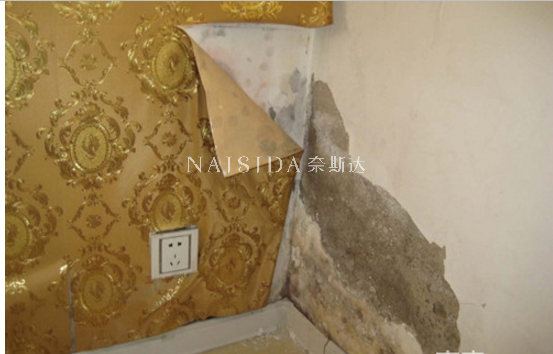
Super complete tips for preventing moisture during the rainy season
1. Close the window at the right time (applicable space: living room, bedroom)
When the humid air strikes, residents must remember to close the windows of their homes, especially the windows facing south and southeast, so as not to give the moisture outside the windows any chance to sneak in. The most important time to prevent moisture is the morning and evening of each day. The air humidity during these two periods is higher than that in the afternoon. If the doors and windows are not closed in time, water vapor will penetrate into every corner of the home.
2. Occasional air conditioner (applicable space: living room, bedroom)

The most convenient way to prevent moisture indoors is to use a dehumidifier or turn on an air conditioner from time to time to extract moisture from the air. In summer, they can be used to prevent the indoor air from being too humid, which can cause moisture to the home, especially wood products and wooden floors.
3. Lime absorbs moisture (applicable space: kitchen, bedroom)
Lime is a simple and easy to make moisture absorbent. 1 kg of quicklime can absorb about 0.3 kg of moisture in the air. Pack the lime in a wooden box and cover it when it is not wet; open the cover when it is wet, and at the same time, do not open the big window to keep the indoor air dry and pleasant.

4. Newspaper anti-mold (applicable space: bedroom)
The weather is humid and the clothes in the closet often get moldy. What should I do? Open the wardrobe door for a long time to ventilate and prevent mildew, but there is also a lot of dust. For example, spread newspapers at the bottom of the closet, or even stick newspapers on the inside of the door. Newspaper can absorb moisture to achieve anti-mildew effect; and the smell of ink on newspaper can also repel insects.
5. Use desiccant skillfully
Proper placement of the desiccant can achieve a good effect of preventing moisture. The most common ones are moisture absorption boxes and dehumidification bags. Generally, the absorbent box has a variety of fragrances, and is suitable for being placed on the sofa and corner room in the living room, under the bed in the bedroom, and under the cupboard in the kitchen. Dehumidification bags made of water-absorbing resin and charcoal are suitable to be placed in closed spaces such as wardrobes and shoe cabinets. After a period of use, the contents of the moisture absorption box can be taken out, and the bulk desiccant can be purchased and put into the box for reuse. .

How to prevent moisture in daily necessities
1. Moisture-proof home appliances
The main reason home appliances are afraid of damp is that they will cause bacteria to grow and leak electricity due to humidity. So how should we deal with it specifically? First of all, place large appliances in a ventilated place as much as possible. Including the washing machine, it is best to move it out of the bathroom and place it on a raised position to help keep it dry. In addition, when the weather is humid, it is also correct to put home appliances in standby mode, because during the standby process, the parts in the machine such as the transformer in the working state will emit a certain amount of heat, which helps to dissipate the moisture in the machine.
Some home appliances, such as TVs and computers, have many small holes in the housing. Over time, dust particles will enter the inside of the appliance through these small holes. In humid weather, condensation will condense with dust, causing problems such as disconnection and leakage of electrical appliances. In this regard, the user can use a hair dryer to blow up and down, left and right, against the small holes of the housing of the appliance to dissipate the dust and moisture inside the appliance.
Experts remind: For electrical appliances that have been used for a certain number of years, when there is a problem, professional maintenance personnel must come to maintain and clean up the internal dust. Do not do it yourself to prevent the danger of leakage.
2. Moisture-proof wooden floor
After being damp, the wooden floor is prone to arching and anti-warping, which is very unsightly. If it is being renovated, the initial effort to prevent moisture from the wooden floor must be done well. When the floor is constructed, it must be treated with moisture and insect control first, sprayed with insect-proof powder, and then spread with moisture-proof paper (membrane). Moisture-proof paper (membrane) should be stacked more than 20cm on top of each other, and should be spread to 10cm above the foot of the wall. It is recommended that you collect more information and carefully understand the choice of flooring and paving knowledge to avoid regret.
Experts remind: Most wood flooring products on the market now have melamine glue added to the base material, which can improve moisture resistance and meet environmental protection requirements. However, some other manufacturers add a large amount of low-cost ordinary urea-formaldehyde glue to their products. Although the moisture-proof performance is greatly improved, the formaldehyde content is seriously exceeded, which can easily harm the health of users. Remind the general public to pay attention to identification when buying, not to blindly pursue moisture-proof performance and harm their health.

3. Moisture-proof furniture and furnishings
Sofas, carpets, quilts, pillows and even plush toys may be disturbed by moisture. What should I do? For fabric sofas and carpets, the dust on the surface must be cleaned regularly, and if necessary, blow gently with a hair dryer to help dissipate moisture. As soon as the weather clears, you must hurry up and put the damp furnishings in the sun.
It is best to wipe wrought iron furniture with clean water or a softer detergent. If it encounters wet weather, it is best to use a dry cloth to clean it. If it is solid wood furniture, apply a special cleaning agent and wipe gently. In addition, another good way to prevent moisture from wood furniture is to use some absorbent paper or plastic paper on the surface of the wood furniture. For leather sofas, you can put some desiccant to keep it dry.
Bathroom: Shower curtain is the best choice. If possible, install shower curtain as far as possible to prevent splashing of bath water. It is best to open a window or install ventilation equipment in the bathroom. If there is no ventilation equipment, you should close the door when leaving the bathroom after taking a shower. After the water vapor condenses, you can go in and dry it or use an electric fan to dry it. Try not to use plastic wall materials in the bathroom. If the brick joints produce black mold spots, they should be cleaned up in time.
Wardrobe: Don't arrange clothes in rainy days to avoid moisture intrusion. You can stuff your shoes with newspapers when you store them, which can absorb moisture and keep the shoes from deforming.
Floor: Every time you finish mopping the floor, try to use a mop or dry cloth to dry the floor, or use a wet and dry vacuum cleaner to absorb moisture.
Tableware: Do not put the cleaned tableware into the cabinet wet, but dry it with a rag first, or place it upright to air dry. A towel can be laid under the sink to wipe off water stains at any time.




